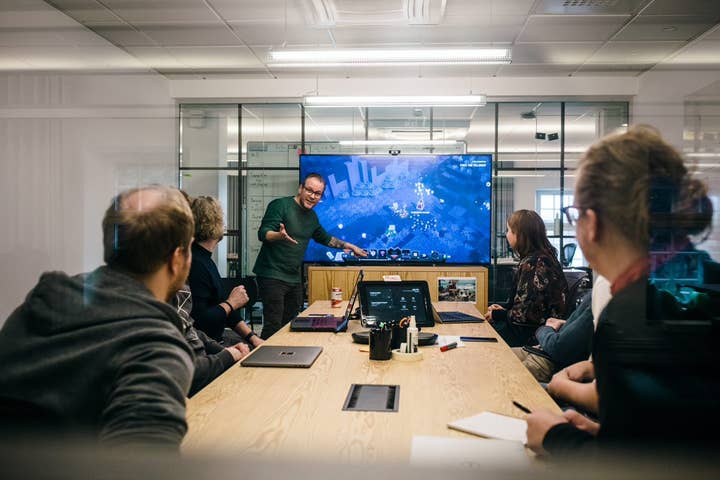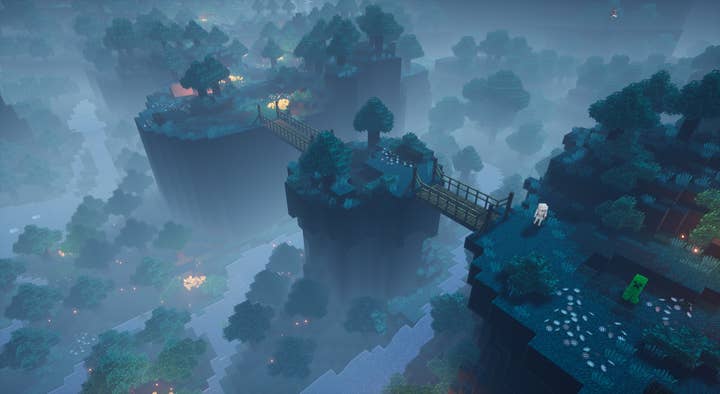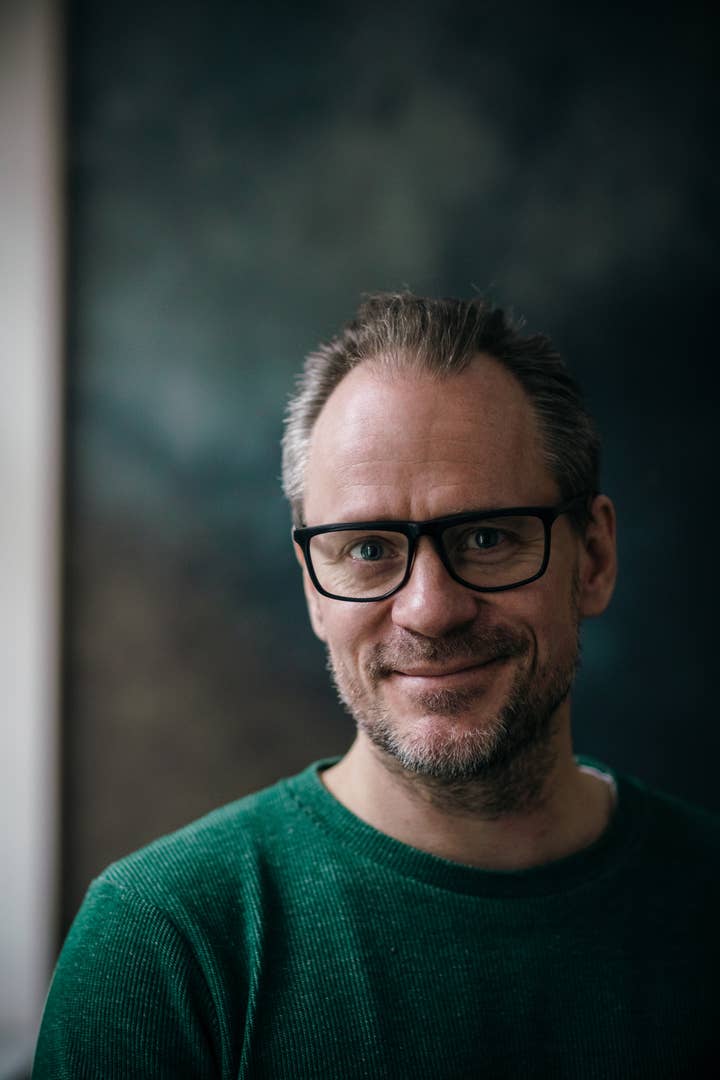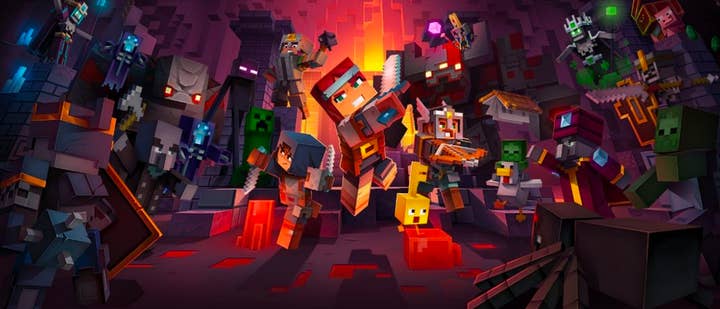Mojang returns to its indie roots with Minecraft Dungeons
The 25-person team on turning one of the world's biggest games into a dungeon crawler for everyone
A few minutes into a chat with the makers of Minecraft Dungeons and I started to forget I was talking to one of the most influential game developers in the world.
Minecraft is played by well over 100 million people every month. It's a game that exists everywhere, on every platform, and it is even used to teach children in schools globally. It is comfortably Microsoft's biggest games IP, and has remained relevant and popular for more than a decade. Yet it's also one of the original indie games, responsible for every major games publisher launching an indie label to "find the next Minecraft."
But Mojang is not an indie anymore -- not by any stretch. It's a decent-sized studio owned by one of the world's biggest corporations, but in the 25-person development team behind Minecraft Dungeons, the indie spirit seems to live on.
"[Indie] is how we started," says Mans Olson, game director on Minecraft Dungeons. "A lot of us have that background on the team. Not everyone, but there's still definitely a lot of that thinking going on. We have a lot of multi-disciplined people."

Art director Daniel Bjorkefors adds: "It's confusing sometimes. I am an art director, but I am also doing all the UI and design, and sometimes I'm not sure if I'm art director or not. Everyone is pulling in. We've had someone create an entire level and art direct it, so I didn't have to touch it. That's how it works when you're a small team."
According to Microsoft senior producer Nathan Rose, the "indie" element of Mojang is something that its parent company has been eager to maintain and protect.
"Since I am based in Redmond, a good portion of my job is helping these guys retain their indie dev sensibilities, and shielding them from a lot of the baggage that comes as being part of a larger company," Rose says. "I have been at Microsoft now for about eight years as part of the games team, and worked on Sunset Overdrive and World of Tanks. I then transitioned over to this team about a year-and-a-half ago. Before that I worked at Disney. I feel like I've found my home with this team because of how passionate I am about building those experiences."
Minecraft Dungeons is a different take on the brand. It's a dungeon crawler, a co-op action-adventure game, and it's part of Mojang's mission to expand the brand into other areas. It follows the early access launch of the AR game Minecraft Earth last year.
"We wanted to make more Minecraft experiences within the franchise for a while," Olson explains. "The thing about Minecraft, the base game, is that it's so broad in terms of what you can do in it. You have survival, you have creative, you have all these various mods and ways of playing, so in order to give players a new experience, something they cannot get in the base game, you have to stray quite far from what the base game is.

"We chose to focus on two of the pillars -- there are many more -- which are the foundation for Minecraft, and those two were adventure and exploration. As a team, we are really passionate about this genre, about dungeon crawlers, so we saw the potential of combining that with Minecraft. It seemed like a natural fit, as you do a lot of going into dungeons and finding treasure, equipping yourself and finding mobs.
"Initially, we wanted to make that for the Nintendo 3DS. It had a small scope, it was a single-player project, but as we started prototyping we realised there wasn't a great reason to only put it on 3DS. We also figured it would be fun in multiplayer. So we pivoted to make it a multiplayer game, we increased the scope a bit, and targeted it on Switch, PlayStation 4, Xbox and Windows."
To begin with, Dungeons was a Zelda-like title, but the switch to multiplayer saw the team look to other games for inspiration.
"A good portion of my job is helping these guys retain their indie dev sensibilities"
Nathan Rose
"We looked at games like Diablo, Torchlight and Gauntlet, which are classic games in this genre," Olson says. "And we looked at a lot of modern, co-operative first-person shooter games, such as Left 4 Dead and Vermintide, to find out how to make that co-operation tight and interesting.
"But obviously the main [inspiration] is Minecraft itself. Whenever we introduce anything into the game, we ask what exists in Minecraft? How have they done it? Can we put it straight into Dungeons? If we can, fantastic. But most of the time we can't and need to adapt it in some way. So we take what exists in Minecraft and shift it about a bit until we have something that feels like it works the same way, feels familiar, feels like Minecraft, but is actually its own thing that works in Dungeons."
Bjorkefors continues: "From an art perspective, there are some set rules with the Minecraft universe, like no blood and no gore. So we had to find another way to make it RPG-looking, which I really think we succeeded with."
Olson says that there has been a close relationship with the "vanilla" Minecraft team during development, as although Dungeons is a very different genre, it still had to feel like it was part of the same universe.
"They're involved day-to-day," he says. "It's really important to us... We meet every week with the various projects, such as vanilla, Dungeons and things that relate to Minecraft Earth. We're aligning on what goes into these games. The idea is that anything that does go into Dungeons or Earth, should also be able to be in vanilla Minecraft. That doesn't mean it's going to be -- in most cases it probably isn't -- but the idea is that it should theoretically fit within the bounds of what Minecraft is.

"There are some examples of this where we have had overlap. Illagers as a faction, the evil faction in Dungeons, they were created by Jens [Peder Bergensten] -- who was the lead developer on Minecraft and is now our chief creative officer -- as the antagonist faction for Dungeons... Some of them, like the Pillager, a crossbow-wielding illager, were developed for Dungeons but have been added into vanilla Minecraft."
Olson says there are "many examples" of things that didn't go into the game because it conflicted with the other projects -- and in some cases, there are new ideas that will appear later to coincide with other things happening in the Minecraft universe. In fact, the team is already thinking about ways to keep Dungeons relevant in the months and years to come. Is it the aim that this game lives forever, much like its parent title?

"Forever is a long word. Well, it's only seven letters -- it's a long time," Olson says. "We would certainly hope so. We have planned for us to keep developing the game as we move forward. We have announced two DLCs that you can get. We have plans to add more content after that. But obviously it depends on the reaction of the players."
Minecraft Dungeons' development had to be wrapped up in unusual circumstances, with the game reaching completion in the middle of a global pandemic with much of the world on lockdown. It did slip slightly as a result, moving from an April launch window to May 26, but the team has quickly settled into the new reality.
"It's gone better than I expected," Rose says. "Some people perform better in isolation, as they're able to get more done with more focus. But their days just become much longer. Whereas those who are not used to it, we felt a bit out of control during those first few weeks. But now we are into our third month."
Olson adds: "The big challenges have obviously been things like how do we do testing of local co-op? Not everyone has been entirely confined for the whole duration, and some have other people in their households who can help. We have spent a bit more time playing online."
"The big challenges have been things like testing local co-op in lockdown"
Mans Olson
Like all Minecraft titles, Dungeons isn't specific to Xbox and is ubiquitous in terms of platforms. The game was initially planned as a Nintendo exclusive, and there's certainly a lot of expectation on how the Switch version might perform. Indeed, there is something a bit Nintendo about Dungeons -- dungeon crawlers tend to have a hardcore gamer appeal, but this has some of its harder edges softened. Nevertheless, the early response from the core PC gaming press has been largely enthusiastic.
"We wanted to keep this game approachable, while also retaining as much complexity and depth as we can," Olson says. "The goal is that if you put a gamepad into somebody's hand, then they should be able to pick it up and play it straight away. Amazingly, it seems to have mostly worked. We have found that without a tutorial, if you put a gamepad into players' hands, they pick it up.
"A lot of it is based on the design decision that comes from Minecraft. In Minecraft you don't have any inherent abilities, there are no character classes. We had this idea that you are what you wear, which is prominent in Dungeons. The way that you start out with just a little bit of gear, and you have the basic gameplay, but as you collect more gear and artefacts, that changes your play style and it happens at a natural pace that we think works really well for the game."
He continues: "You don't want to get your hopes up too much, so you feel surprised when people seem to really like it. Fingers crossed. The response has been pretty positive so far. We were watching the streams during the beta period, and it's been fantastic. It's been really fun to see what people do with it. They've been discovering secrets, running through it over and over again, and spending more hours on it than I had expected considering the limited content that we released in the beta."
Rose adds: "And we've looked for negativity. We want to make the game better. And while we've received a tonne of feedback, we haven't seen anything negative since we showed the game over a year ago."

